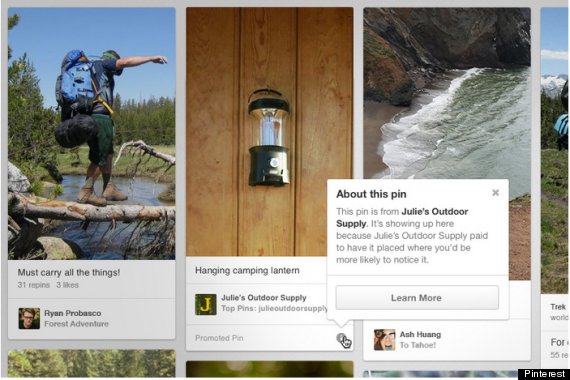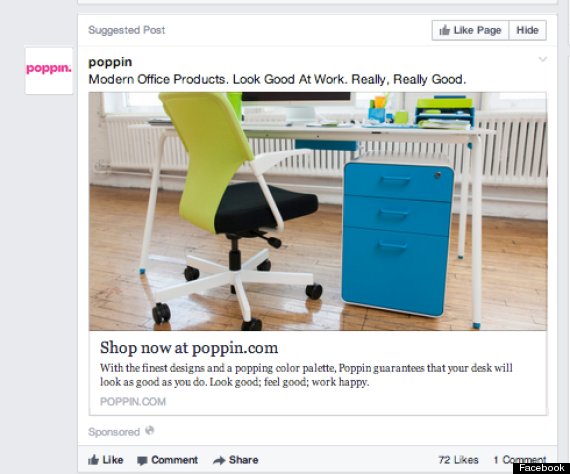Slowly but surely, social networks are letting advertisers creep to the forefront of our online lives.
On Wednesday, Pinterest became the latest site to announce it would include ads in users' feeds, and Instagram said it began testing ads last week.
What's noteworthy about these announcements isn't that ads are coming -- that was only a matter of time. It's where they're going: straight to the most prominent parts of these sites. No longer confined to the sidelines of our status updates, or relegated to boxes and banners separate from the content we consume, ads are now right where we get everything else.
With a few exceptions, many of the the most popular social networking services -- including Facebook and Twitter -- have found ways to shift advertisers' images into their users' core feeds, without sparking major backlash or attrition. In some ways, this makes social media more like traditional media: magazines have been slotting big photos into their pages for decades.
This trend is driven in part by the need to deliver profits; in part by our smartphones, which have smaller screens and thus fewer places to display ads; and in part by our own addiction to sharing photos.
Nearly half of all internet users share photos online, according to a 2012 Pew Research Center report. The growth of photo sharing has brought with it an opportunity for social media sites to put even more media-rich and eye-catching ads in front of their users. Because we're also sharing pictures and videos, it's not as much of an interruption when advertisers do the same.
As Facebook CEO Mark Zuckerberg noted in an earnings call in January of this year, "One of our product design principles is, we want the organic content to be of the same basic type as paid content. Advertisers want really rich things like big pictures and video and we haven't provided those historically."
Maybe Facebook hasn't done it historically. But it now can and does.
Here's a guide to how sites are placing paid content -- and the slight differences in the ways photos are being used to make these ads more palatable and hard to miss.
Pinterest:

On Wednesday, Pinterest announced that ads might appear alongside users' search results or in specific category feeds. "They work just like regular pins, only they have a special 'promoted' label, along with a link to learn more about what that means," the company explained.
Facebook:

Brands can pay Facebook to bump up the number of followers who see what they post to their Pages. (For example, Pepsi could pay to have a greater share of its online "fans" see a snapshot of someone holding a Pepsi beverage. But Facebook also allows advertisers to reach people that haven't "liked" their accounts, and those News Feed stories appear as "Suggested Posts" (like the one pictured above). They're listed as sponsored, and users can "hide" ads they don't like.
Tumblr:

Tumblr started inserting ads into users' mobile Dashboards last year, then added them to the web in May of this year. A dollar-sign in the top right-hand corner of the post marks it as sponsored.
Twitter:

Twitter's promoted tweets can include images in the form of links to blog posts or Twitpics -- but these images don't automatically appear. (Screenshot via @jakeneeley.)
Instagram:

We haven't yet seen an Instagram ad in the wild. (But we'd love to! If you've spotted one, please send a link or screenshot to bianca@huffingtonpost.com or @bbosker).
According to Instagram's announcement, the app aspires to make its ads "enjoyable and creative in much the same way you see engaging, high-quality ads when you flip through your favorite magazine." To do so, it will "focus on delivering a small number of beautiful, high-quality photos and videos from a handful of brands that are already great members of the Instagram community." As on Facebook, users will be able to hide ads they don't like, and share why.